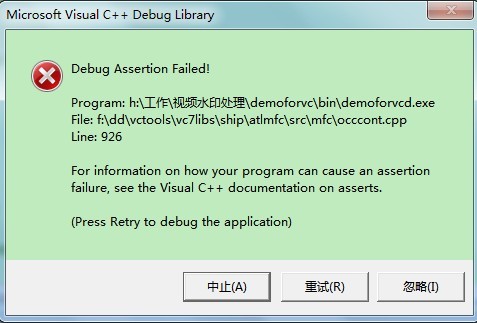给定文本字符串和模式字符串,检查文本中是否存在模式。 几种模式搜索算法( 国民党 , 拉宾·卡普 , 朴素算法 , 有限自动机 )已经讨论过,可用于此检查。 这里我们将讨论基于后缀树的算法。 作为先决条件,我们必须知道如何以一种或另一种方式构建后缀树。 一旦我们为给定的文本构建了后缀树,我们需要根据模式中的字符从根遍历到叶。如果我们在遍历时没有从树上掉下来(即从根到叶或中间的某个地方有一条路径),那么模式作为子字符串存在于文本中。
null

在这里,我们将使用Ukkonen的算法构建后缀树,如下所述: Ukkonen后缀树构造——第1部分 Ukkonen后缀树构造——第2部分 Ukkonen后缀树构造——第3部分 Ukkonen后缀树构造——第4部分 Ukkonen后缀树构造——第5部分 Ukkonen后缀树构造——第6部分 子字符串检查的核心遍历实现,可以针对其他算法构建的后缀树进行相应修改。
C
// A C program for substring check using Ukkonen's Suffix Tree Construction #include <stdio.h> #include <string.h> #include <stdlib.h> #define MAX_CHAR 256 struct SuffixTreeNode { struct SuffixTreeNode *children[MAX_CHAR]; //pointer to other node via suffix link struct SuffixTreeNode *suffixLink; /*(start, end) interval specifies the edge, by which the node is connected to its parent node. Each edge will connect two nodes, one parent and one child, and (start, end) interval of a given edge will be stored in the child node. Let's say there are two nods A and B connected by an edge with indices (5, 8) then this indices (5, 8) will be stored in node B. */ int start; int *end; /*for leaf nodes, it stores the index of suffix for the path from root to leaf*/ int suffixIndex; }; typedef struct SuffixTreeNode Node; char text[100]; //Input string Node *root = NULL; //Pointer to root node /*lastNewNode will point to newly created internal node, waiting for it's suffix link to be set, which might get a new suffix link (other than root) in next extension of same phase. lastNewNode will be set to NULL when last newly created internal node (if there is any) got it's suffix link reset to new internal node created in next extension of same phase. */ Node *lastNewNode = NULL; Node *activeNode = NULL; /*activeEdge is represented as an input string character index (not the character itself)*/ int activeEdge = -1; int activeLength = 0; // remainingSuffixCount tells how many suffixes yet to // be added in tree int remainingSuffixCount = 0; int leafEnd = -1; int *rootEnd = NULL; int *splitEnd = NULL; int size = -1; //Length of input string Node *newNode( int start, int *end) { Node *node =(Node*) malloc ( sizeof (Node)); int i; for (i = 0; i < MAX_CHAR; i++) node->children[i] = NULL; /*For root node, suffixLink will be set to NULL For internal nodes, suffixLink will be set to root by default in current extension and may change in next extension*/ node->suffixLink = root; node->start = start; node->end = end; /*suffixIndex will be set to -1 by default and actual suffix index will be set later for leaves at the end of all phases*/ node->suffixIndex = -1; return node; } int edgeLength(Node *n) { if (n == root) return 0; return *(n->end) - (n->start) + 1; } int walkDown(Node *currNode) { /*activePoint change for walk down (APCFWD) using Skip/Count Trick (Trick 1). If activeLength is greater than current edge length, set next internal node as activeNode and adjust activeEdge and activeLength accordingly to represent same activePoint*/ if (activeLength >= edgeLength(currNode)) { activeEdge += edgeLength(currNode); activeLength -= edgeLength(currNode); activeNode = currNode; return 1; } return 0; } void extendSuffixTree( int pos) { /*Extension Rule 1, this takes care of extending all leaves created so far in tree*/ leafEnd = pos; /*Increment remainingSuffixCount indicating that a new suffix added to the list of suffixes yet to be added in tree*/ remainingSuffixCount++; /*set lastNewNode to NULL while starting a new phase, indicating there is no internal node waiting for it's suffix link reset in current phase*/ lastNewNode = NULL; //Add all suffixes (yet to be added) one by one in tree while (remainingSuffixCount > 0) { if (activeLength == 0) activeEdge = pos; //APCFALZ // There is no outgoing edge starting with // activeEdge from activeNode if (activeNode->children] == NULL) { //Extension Rule 2 (A new leaf edge gets created) activeNode->children] = newNode(pos, &leafEnd); /*A new leaf edge is created in above line starting from an existing node (the current activeNode), and if there is any internal node waiting for it's suffix link get reset, point the suffix link from that last internal node to current activeNode. Then set lastNewNode to NULL indicating no more node waiting for suffix link reset.*/ if (lastNewNode != NULL) { lastNewNode->suffixLink = activeNode; lastNewNode = NULL; } } // There is an outgoing edge starting with activeEdge // from activeNode else { // Get the next node at the end of edge starting // with activeEdge Node *next = activeNode->children]; if (walkDown(next)) //Do walkdown { //Start from next node (the new activeNode) continue ; } /*Extension Rule 3 (current character being processed is already on the edge)*/ if (text[next->start + activeLength] == text[pos]) { //If a newly created node waiting for it's //suffix link to be set, then set suffix link //of that waiting node to current active node if (lastNewNode != NULL && activeNode != root) { lastNewNode->suffixLink = activeNode; lastNewNode = NULL; } //APCFER3 activeLength++; /*STOP all further processing in this phase and move on to next phase*/ break ; } /*We will be here when activePoint is in the middle of the edge being traversed and current character being processed is not on the edge (we fall off the tree). In this case, we add a new internal node and a new leaf edge going out of that new node. This is Extension Rule 2, where a new leaf edge and a new internal node get created*/ splitEnd = ( int *) malloc ( sizeof ( int )); *splitEnd = next->start + activeLength - 1; //New internal node Node *split = newNode(next->start, splitEnd); activeNode->children] = split; //New leaf coming out of new internal node split->children] = newNode(pos, &leafEnd); next->start += activeLength; split->children] = next; /*We got a new internal node here. If there is any internal node created in last extensions of same phase which is still waiting for it's suffix link reset, do it now.*/ if (lastNewNode != NULL) { /*suffixLink of lastNewNode points to current newly created internal node*/ lastNewNode->suffixLink = split; } /*Make the current newly created internal node waiting for it's suffix link reset (which is pointing to root at present). If we come across any other internal node (existing or newly created) in next extension of same phase, when a new leaf edge gets added (i.e. when Extension Rule 2 applies is any of the next extension of same phase) at that point, suffixLink of this node will point to that internal node.*/ lastNewNode = split; } /* One suffix got added in tree, decrement the count of suffixes yet to be added.*/ remainingSuffixCount--; if (activeNode == root && activeLength > 0) //APCFER2C1 { activeLength--; activeEdge = pos - remainingSuffixCount + 1; } else if (activeNode != root) //APCFER2C2 { activeNode = activeNode->suffixLink; } } } void print( int i, int j) { int k; for (k=i; k<=j; k++) printf ( "%c" , text[k]); } //Print the suffix tree as well along with setting suffix index //So tree will be printed in DFS manner //Each edge along with it's suffix index will be printed void setSuffixIndexByDFS(Node *n, int labelHeight) { if (n == NULL) return ; if (n->start != -1) //A non-root node { //Print the label on edge from parent to current node //Uncomment below line to print suffix tree // print(n->start, *(n->end)); } int leaf = 1; int i; for (i = 0; i < MAX_CHAR; i++) { if (n->children[i] != NULL) { //Uncomment below two lines to print suffix index // if (leaf == 1 && n->start != -1) // printf(" [%d]", n->suffixIndex); //Current node is not a leaf as it has outgoing //edges from it. leaf = 0; setSuffixIndexByDFS(n->children[i], labelHeight + edgeLength(n->children[i])); } } if (leaf == 1) { n->suffixIndex = size - labelHeight; //Uncomment below line to print suffix index //printf(" [%d]", n->suffixIndex); } } void freeSuffixTreeByPostOrder(Node *n) { if (n == NULL) return ; int i; for (i = 0; i < MAX_CHAR; i++) { if (n->children[i] != NULL) { freeSuffixTreeByPostOrder(n->children[i]); } } if (n->suffixIndex == -1) free (n->end); free (n); } /*Build the suffix tree and print the edge labels along with suffixIndex. suffixIndex for leaf edges will be >= 0 and for non-leaf edges will be -1*/ void buildSuffixTree() { size = strlen (text); int i; rootEnd = ( int *) malloc ( sizeof ( int )); *rootEnd = - 1; /*Root is a special node with start and end indices as -1, as it has no parent from where an edge comes to root*/ root = newNode(-1, rootEnd); activeNode = root; //First activeNode will be root for (i=0; i<size; i++) extendSuffixTree(i); int labelHeight = 0; setSuffixIndexByDFS(root, labelHeight); } int traverseEdge( char *str, int idx, int start, int end) { int k = 0; //Traverse the edge with character by character matching for (k=start; k<=end && str[idx] != ' ' ; k++, idx++) { if (text[k] != str[idx]) return -1; // mo match } if (str[idx] == ' ' ) return 1; // match return 0; // more characters yet to match } int doTraversal(Node *n, char * str, int idx) { if (n == NULL) { return -1; // no match } int res = -1; //If node n is not root node, then traverse edge //from node n's parent to node n. if (n->start != -1) { res = traverseEdge(str, idx, n->start, *(n->end)); if (res != 0) return res; // match (res = 1) or no match (res = -1) } //Get the character index to search idx = idx + edgeLength(n); //If there is an edge from node n going out //with current character str[idx], traverse that edge if (n->children[str[idx]] != NULL) return doTraversal(n->children[str[idx]], str, idx); else return -1; // no match } void checkForSubString( char * str) { int res = doTraversal(root, str, 0); if (res == 1) printf ( "Pattern <%s> is a Substring" , str); else printf ( "Pattern <%s> is NOT a Substring" , str); } // driver program to test above functions int main( int argc, char *argv[]) { strcpy (text, "THIS IS A TEST TEXT$" ); buildSuffixTree(); checkForSubString( "TEST" ); checkForSubString( "A" ); checkForSubString( " " ); checkForSubString( "IS A" ); checkForSubString( " IS A " ); checkForSubString( "TEST1" ); checkForSubString( "THIS IS GOOD" ); checkForSubString( "TES" ); checkForSubString( "TESA" ); checkForSubString( "ISB" ); //Free the dynamically allocated memory freeSuffixTreeByPostOrder(root); return 0; } |
输出:
Pattern <TEST> is a SubstringPattern <A> is a SubstringPattern < > is a SubstringPattern <IS A> is a SubstringPattern < IS A > is a SubstringPattern <TEST1> is NOT a SubstringPattern <THIS IS GOOD> is NOT a SubstringPattern <TES> is a SubstringPattern <TESA> is NOT a SubstringPattern <ISB> is NOT a Substring
Ukkonen的后缀树构造需要O(N)的时间和空间来为长度为N的字符串构建后缀树,之后,子字符串检查的遍历需要O(M)的长度为M的模式。 对这里讨论的遍历算法稍加修改,我们可以回答以下问题:
- 查找文本T中给定模式P的所有匹配项。
- 如何检查模式是否是文本的前缀?
- 如何检查模式是否为文本的后缀?
我们发表了以下更多关于后缀树应用程序的文章:
本文由 导演 。如果您发现任何不正确的地方,或者您想分享有关上述主题的更多信息,请发表评论
© 版权声明
文章版权归作者所有,未经允许请勿转载。
THE END


![关于”PostgreSQL错误:关系[表]不存在“问题的原因和解决方案-yiteyi-C++库](https://www.yiteyi.com/wp-content/themes/zibll/img/thumbnail.svg)



